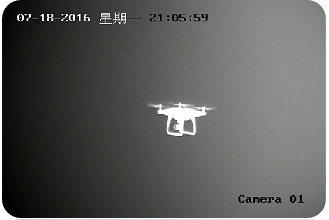As the use of unmanned aerial vehicles (UAVs), commonly known as drones, continues to rise, airports are facing the challenge of ensuring safety and security in their airspace. Unauthorized drones can pose risks such as collisions with aircraft, disruptions to operations, and breaches of security protocols. To counter these threats, airports have adopted advanced anti-drone technology. In this article, we will explore how anti-drone technology works at airports and the measures taken to protect against potential drone incursions.

Detection Systems:
The first line of defense against unauthorized drones at airports is advanced detection systems. These systems utilize a range of technologies to identify and track drones within the airport's airspace. Radar systems are commonly used, capable of detecting drones by analyzing their radar cross-section and movement patterns. Additionally, radio frequency (RF) sensors can detect the radio signals emitted by drones and assist in locating them. Optical and thermal imaging systems may also be employed to visually identify drones in the airspace.
Classification and Identification:
Once a drone is detected, the next step is to classify and accurately identify it. Anti-drone systems employ sophisticated algorithms and machine learning techniques to differentiate between authorized drones, such as those operated by law enforcement or airport authorities, and unauthorized ones. By analyzing various parameters such as size, speed, flight patterns, and communication signals, the system can determine if the drone poses a potential threat.
Countermeasures:
When an unauthorized drone is identified, airports employ a range of countermeasures to neutralize the threat and ensure airspace safety. Non-kinetic measures, like radio frequency jamming, can disrupt the communication signals between the drone and its operator, rendering the drone inoperable or forcing it to land. Directional antennas can create exclusion zones where all communication with the drone is disrupted. Laser-based systems may also be used to disable drones by targeting their sensors or communication links.

Collaboration with Authorities:
Airports work closely with local law enforcement agencies and regulatory bodies to coordinate their anti-drone efforts. In the event of a drone incursion, an immediate response is initiated, involving collaboration between airport security, air traffic control, and law enforcement. This collaboration ensures a swift and effective response to mitigate the potential risks posed by unauthorized drones. Additionally, airports actively participate in sharing information and best practices with other airports and regulatory bodies to enhance collective anti-drone capabilities.
Continuous Monitoring and Research:
The threat landscape posed by drones is continually evolving, requiring airports to conduct continuous monitoring and research. Airports invest in research and development to stay ahead of emerging threats and advancements in drone technology. They collaborate with industry experts, technology providers, and regulatory bodies to evaluate and continually enhance their anti-drone systems. Regular testing, training, and drills are conducted to ensure the effectiveness of anti-drone measures and to train personnel in responding to potential drone incidents.
The implementation of anti-drone technology at airports plays a vital role in safeguarding airspace, ensuring the safety and security of passengers and aircraft. Through advanced detection systems, accurate identification, and effective countermeasures, airports are equipped to swiftly detect and neutralize unauthorized drones. Collaboration between airport authorities, law enforcement agencies, and regulatory bodies further strengthens the defense against potential drone incursions. As the drone landscape evolves, airports will continue to invest in research and development, staying at the forefront of anti-drone technology to ensure safe and secure skies for all.
As we explore the intricacies of how anti-drone technology works at the airport, it is essential to highlight the pivotal role played by advanced radar technology. At Mskyeye , we take immense pride in being a leading manufacturer and provider of cutting-edge radar systems. With a highly skilled and dedicated radar technology team, we not only offer robust anti-drone radar solutions but also cater to a diverse range of radar requirements. Our commitment to delivering reliable and trusted radar services extends beyond anti-drone capabilities, making us a dependable partner for your radar export needs. Collaborating with us ensures access to state-of-the-art radar technology and underscores our reputation as a reliable and innovative industry player. Together, we can forge a powerful alliance to address the challenges posed by drones and enhance security across the aviation landscape.

